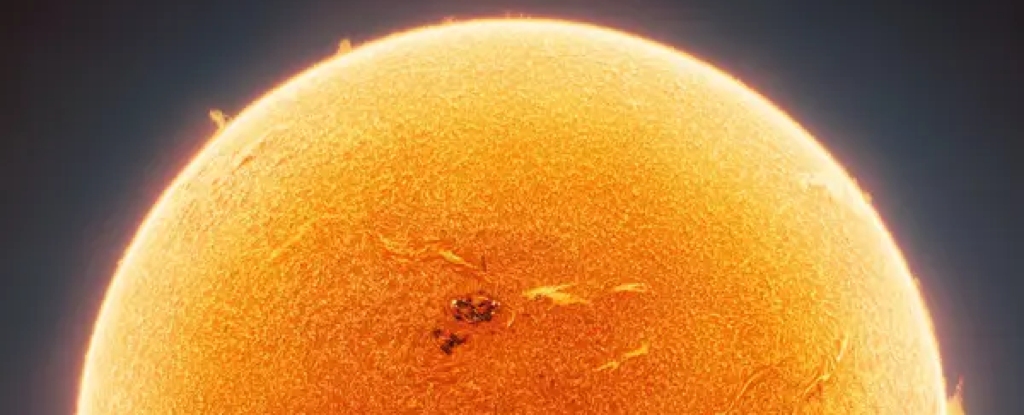The International Space Station (ISS) is constantly orbiting around the Earth, making 16 rounds every day. Photographer Andrew McCarthy was recently able to capture the ISS flying across the sun in a stunning portrait. But it took him 12 hours of composition, three telescopes, and two blown-out tires to achieve the shot. The critical moment of capturing the ISS was when it flew directly overhead, and the photographer had to balance perfect timing, precise physics, and a lot of persistence.
The ISS’s Appearance Against the Sun
The photograph is a mosaic of thousands of images, and the ISS appears as an unassuming silhouette against the sun’s roiling plasma. The space station is located 250 miles above the Earth, and it is frequently passing between the Earth and the sun, but to get a good photo, McCarthy needed it to be directly overhead.
The Sun’s Turbulence and Solar Eruptions
The sun is massive, turbulent, and violent, and it erupts high-energy radiation into space, some of which slams into the ISS. The ultra-hot material from the sun has been shooting into space more frequently as the sun grows more active, sometimes toward Earth, in eruptions called solar flares or coronal mass ejections. These solar eruptions can knock out power grids, black out radio signals, push satellites out of orbit, confuse GPS, and even damage technology on the space station.
The Chromosphere Light McCarthy Wanted to Capture
McCarthy wanted to capture the fiery drama of the sun’s chromosphere, the thin layer of plasma between its visible surface and the outermost layer of its atmosphere. In this layer, the sun’s plasma reaches broiling temperatures upwards of 10,000 degrees Fahrenheit, emitting a reddish light. McCarthy used the sunspots as a visual cue, knowing the ISS would pass in front of them. He captured about 230 images per second with his three telescopes and ended up with dozens of raw photosphere images of the space station.
In conclusion, capturing the ISS flying across the sun was a challenging task that required patience, persistence, and precision. The stunning portrait showcases the ISS as an unassuming silhouette against the sun’s roiling plasma, highlighting the turbulence and violence of the sun’s activity. McCarthy also captured the fiery drama of the sun’s chromosphere, using sunspots as a visual cue. While McCarthy is happy with his current shot, he believes he can do better and is planning to capture an even better one.



Leave a Reply